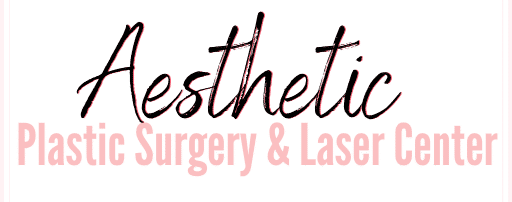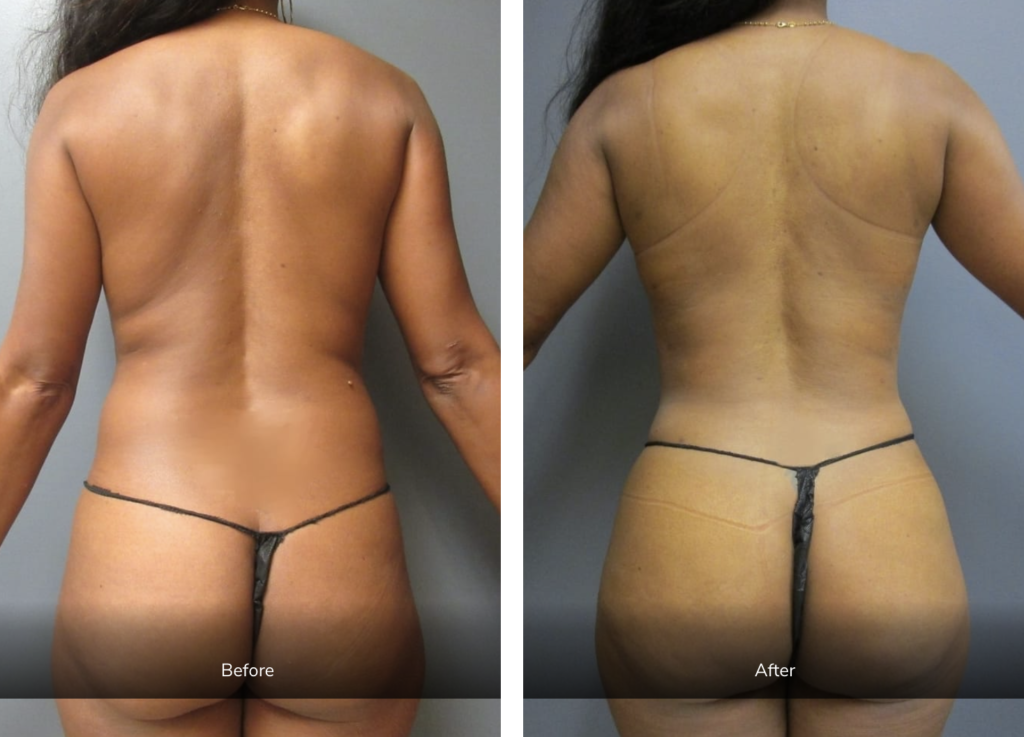Liposculpture (or suction-assisted lipectomy) has become one of the most common cosmetic surgery procedures performed by plastic surgeons today. Liposuction a way to shape and contour the body, producing dramatic changes in a small amount of time by removing stubborn fatty deposits under the skin.
Proven safety, minimal scarring and outstanding results have made this liposuction procedure the preferred method for removing fat from the hips, thighs, buttocks and midriff as well as areas of the face, neck, arms and back.
What to Expect During Your Liposuction Procedure
A liposuction procedure is not an alternative to weight reduction but can be very effective in removing fat from areas that do not respond to diet and exercise programs. Suction-assisted lipectomy can be performed in our office out-patient surgical suite under local or general anesthesia; this means that the patient will go home after the surgery.
Liposuction is a cosmetic plastic surgery procedure that removes excess fat from the body and improves your body contours and proportion.
Liposuction can be performed alone or along with other plastic surgery procedures, such as a facelift, breast reduction or a tummy tuck.
Liposuction is not an alternative to weight reduction but can be very effective in removing fat from areas that do not respond to diet and exercise.
It can treat specific areas of your body that you want to slim down, including your abdomen, ankles, arms, buttocks, cheeks, chin, hips, knees and neck.
Liposuction can also be used to improve the shape of your waistline by removing fat from the waist area.
Liposuction is not a treatment for obesity or a substitute for proper diet and exercise. It is also not an effective treatment for cellulite—the dimpled skin that typically appears on the thighs, hips and buttocks—or loose saggy skin.
Vaser liposuction (ultrasonic) and Smartlipo (laser) are types of liposuction that use heat to liquefy the fat prior to removal. The heat promotes collagen production and skin tightening.
How long is recovery from a liposuction procedure?
Liposuction is an outpatient treatment, so no hospital stay is required unless the patient has a medical history that requires hospitalization. Swelling and bruising are normal after the procedure.
A compression garment is required after surgery. Patients can normally return to work several days after their liposuction procedure, depending on the physical intensity of the job. Normal physical activity can be resumed when cleared by the doctor, normally two to three weeks after surgery. Do not resume normal physical activity or return to work until cleared by the doctor.
How long do results from liposuction last?
Results from a liposuction procedure lasts for many years, as the fat is removed from the body.
However, natural processes such as weight gain, aging, factors from pregnancy, and other lifestyle factors, including genetics, can cause variations. It is important to maintain a stable weight and to exercise after surgery to ensure the longevity of the results.
Maintaining a healthy diet and exercise regimen will help the results last longer.
If you are in the process of losing weight, it is best to be near or at your weight loss goal before having the procedure done. Following the doctor’s specific instructions after surgery will help the results from your liposuction procedure last as long as possible. This will ensure the best and longest lasting results from the procedure.
What are the risks of liposuction?
As with any surgical procedure, there are risks associated with any liposuction procedure.
The most common risks include bruising and swelling after the procedure.
As with any surgical procedure, there is a risk of infection if not taken care of properly. Blood clots and nerve damage are other risks from the procedure, but are uncommon.
Strictly following the doctor’s instructions for aftercare can help decrease the chance of these risks.
Frequently Asked Liposuction Questions
How is liposuction performed?
Liposuction is an outpatient procedure, meaning the patient will be able to go home after surgery. The patient is under general anesthesia or local anesthesia with IV sedation (twilight anesthesia) for the procedure. Small incisions are made near the areas of treatment and a very thin tube called a cannula is inserted under the skin to reach fat deposits. The cannula is attached to a vacuum, and the doctor will move the tube under the skin, to suction out fatty deposits. The fat can also be inserted into other areas of the body, to help contour and shape other areas. Liposuction is an outpatient procedure, so hospitalization is not required. Patients should plan on having someone to drive them home from the procedure.
How long is recovery from liposuction?
Liposuction is an outpatient treatment, so no hospital stay is required unless the patient has a medical history that requires hospitalization. Swelling and bruising are normal after the procedure. A compression garment is required after surgery. Patients can normally return to work several days after the procedure, depending on the physical intensity of the job. Normal physical activity can be resumed when cleared by the doctor, normally two to three weeks after surgery. Do not resume normal physical activity or return to work until cleared by the doctor.
Liposuction FAQ’s
How long is recovery from liposuction?
How long to results from liposuction last?
Results from liposuction lasts for many years, as the fat is removed from the body. However, natural processes such as weight gain, aging, factors from pregnancy, and other lifestyle factors, including genetics, can cause variations. It is important to maintain a stable weight and to exercise after surgery to ensure the longevity of the results. Maintaining a healthy diet and exercise regimen will help the results last longer. If you are in the process of losing weight, it is best to be near or at your weight loss goal before having the procedure done. Following the doctor’s specific instructions after surgery will help the results from your procedure last as long as possible. This will ensure the best and longest lasting results from the procedure.
What are the risks of liposuction?
As with any surgical procedure, there are risks associated with liposuction. The most common risks include bruising and swelling after the procedure. As with any surgical procedure, there is a risk of infection if not taken care of properly. Blood clots and nerve damage are other risks from the procedure, but are uncommon. Strictly following the doctor’s instructions for aftercare can help decrease the chance of these risks.
What is chin liposuction?
Chin augmentation procedures such as chin liposuction and chin implants help change and define the contours of the chin. Liposuction removes stubborn fatty deposits under the skin. This can be done on the body or on the face, to contour the cheeks, chin, or jawline.
Lipo under the chin works by removing fat under the chin and along the jawline to sculpt the face. This gives a more defined and sculpted jawline, and removes the appearance of a double chin. Results from this procedure are seen immediately after surgery is performed. Chin lipo is often performed with a neck lift or a face lift.
Although the basis for liposuction is removal of fat deposits, liposuction is NOT a substitute for weight loss. If you are planning on losing a large amount of weight, you should talk to your doctor about the best time to have the procedure in your weight loss process.
Who can get chin lipo?
Typically, those who are in their late twenties through early fifties have better skin elasticity, something needed for the skin to contract fully after liposuction. There are other procedures that can help contour the jawline, face, and neck as well, such as a neck lift, face lift, or minimally invasive procedures like Profound, which uses radio-frequency to help tighten skin. Chin implants are another option for those looking to contour their lower face. This is an implant that is shaped to your face needs and placed around the chin bone, to add volume and change the contours of the chin and lower jawline.
How long does chin lipo last?
The results from chin lipo should last many years. However, natural processes such as weight gain or loss, aging, pregnancy, lifestyle factors, and genetics can cause variations. If you are in the process of losing weight, it is best to meet your weight loss goal before the procedure is performed, to ensure the longest lasting results.
How much does chin liposuction cost?
Since the face covers a smaller area than the body, a liposuction procedure on the face costs less than that on the body.


